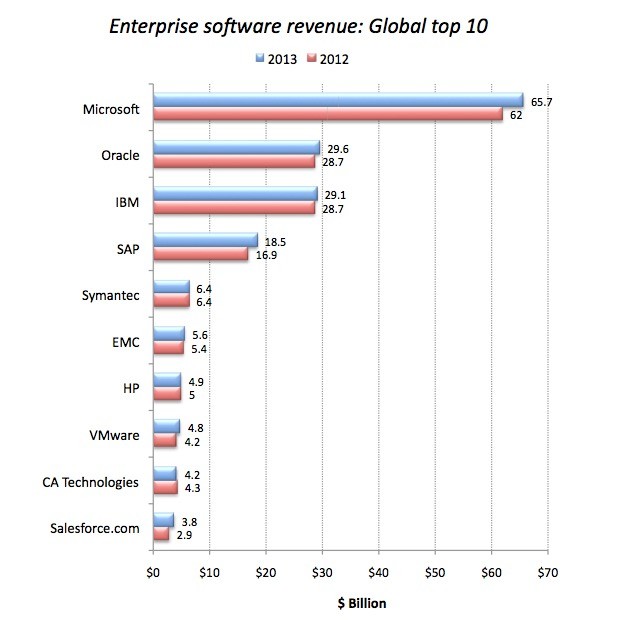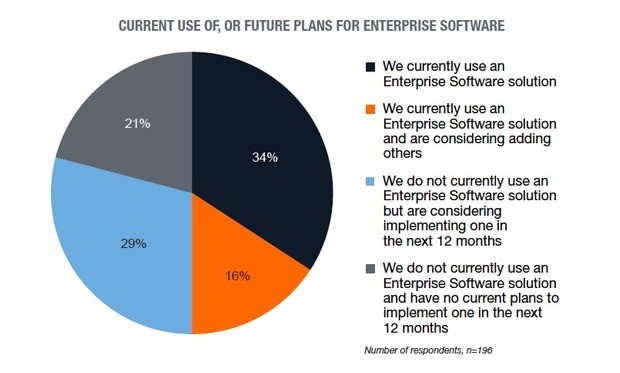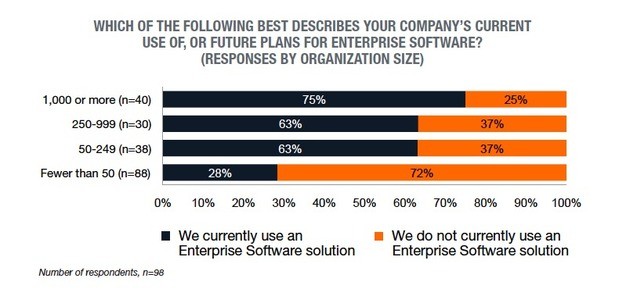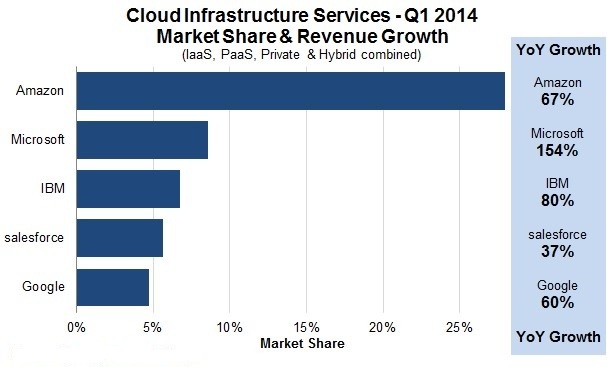For the first time, Salesforce.com (NYSE: CRM), a leading CRM systems company, has joined the list of the ten largest enterprise application software, or EAS, vendors. EAS is a rather nebulous term, comprising a broad range of technologies including customer relationship management, business intelligence, financial and accounting applications, and others.
Microsoft (MSFT +0.56%) is still the largest enterprise software vendor with more than double the revenue of second-place Oracle, with fiscal 2013 revenue of $65.7 billion vs. Oracle's $29.6 billion. Salesforce's enterprise software revenue is, however, growing the fastest among top vendors and shot up 31% in 2013.

Source: Gartner, April 2014
The cloud and SaaS, or software-as-a-service, along with a number of other technology trends such as mobile, analytics, and consumerization are profoundly changing the EAS landscape.
The current state of EAS use by organizations
These are good times for EAS vendors, if a recent Tech Pro Research survey is any indication. According to the survey, 50% of organizations currently use some type of EAS solution, with another 29% planning to do so within the next 12 months. Only 21% of respondents have no plans to use EAS in their organizations within the next year.
If just 30% of the organizations that plan to implement EAS solutions follow up on those plans, the overall percentage of companies using EAS could easily grow by 17.4% by the end of this year, likley resulting in corresponding revenue growth for top EAS vendors.

Larger companies are typically the biggest spenders on EAS, and are increasingly adopting it in their organizations. 68% of large organizations (more than 1,000 employees) used EAS in 2012, and that figure jumped to 75% in 2013.

Source: Tech Pro Research
The rapid rise of the cloud and the utility model represent the biggest shift in the way traditional enterprise applications are written, deployed, and consumed. Cloud technologies are the biggest threat to the established order of on-premises software and the vendors that supply it.
Salesforce is now a dominant cloud services provider; the company is currently the fourth-largest provider in the sector.

Source: Synergy Research Group
According to Forrester Research, the overall cloud market is expected to grow from $58 billion in 2013 to $229 billion by 2020, translating into a 21.7% annual growth. Salesforce is, obviously, a fast-growth businesses and will likely continue enjoying robust organic growth for years to come.
But, the company has remained in the red for 11 straight quarters. So, what's going on here?
Why it's so hard for Salesforce to make a profit
Salesforce has two main weaknesses on its balance sheet that act as a drag on profitability, namely:
- A high level of sales and marketing costs as a percentage of revenue
- Very high levels of share dilution due to excessive executive compensation
As a percentage of revenue, Salesforce's marketing costs in 2013 were approximately 52%. This can be partly attributed to its rapidly swelling workforce, which grew from 5,300 to more than 9,00 last year.
Ballooning sales and marketing costs can negatively impact even high-revenue companies such as Amazon (AMZN +1.43%). Amazon added 33,000 new workers last year, or 36% of its workforce, which is currently 134,600. As a result, the company issued guidance for the current quarter that showed a loss of $455 million, even after hiking the price of Amazon Prime by $20.
Perhaps that is the cost of high-revenue growth that Salesforce will have to endure if its top line keeps expanding so fast. But, economies of scale dictate that this figure should stabilize as the company develops, as long as it is well-managed.
The second reason, however, is a deep flaw that simply boggles the mind. Salesforce pays out 12% of its revenue as stock compensation. This dilutes the company's shares by nearly 5% every year. The huge share dilution is partly responsible for the company's escalating losses. Sadly, the level of compensation as a percentage of revenue has remained unchanged for some time now.
That level might be tolerable in a company with a revenue of less than $1 billion, but is way too high for a company like Salesforce with annual revenue of $5 billion. The average tech company pays out 12% of earnings as stock-based compensation. For instance, Amazon doles out just 1.5% of its revenue as stock-based compensation, and its stock dilution never runs above 1%.
If the company keeps its executive compensation at the current level, while revenue continues growing at 30% or more for the next five years, the figure (as a percentage of revenue) will eventually fall to more normalized levels. However, if the company continues being too generous with its compensation, the operating loss problem will persist no matter how fast it continues growing.
Foolish bottom line
Salesforce is in a great growth businesses and should have no problem growing organically for many years. But, the company must rein in its excessive levels of executive compensation and control its spiraling marketing costs if it is to become profitable. Perhaps investors should wait and see if the company will resolve these thorny problems before jumping in.
